-
CATEGORY ::
- All Seeds /
- All Flower Seeds /
- All Marigold Seeds
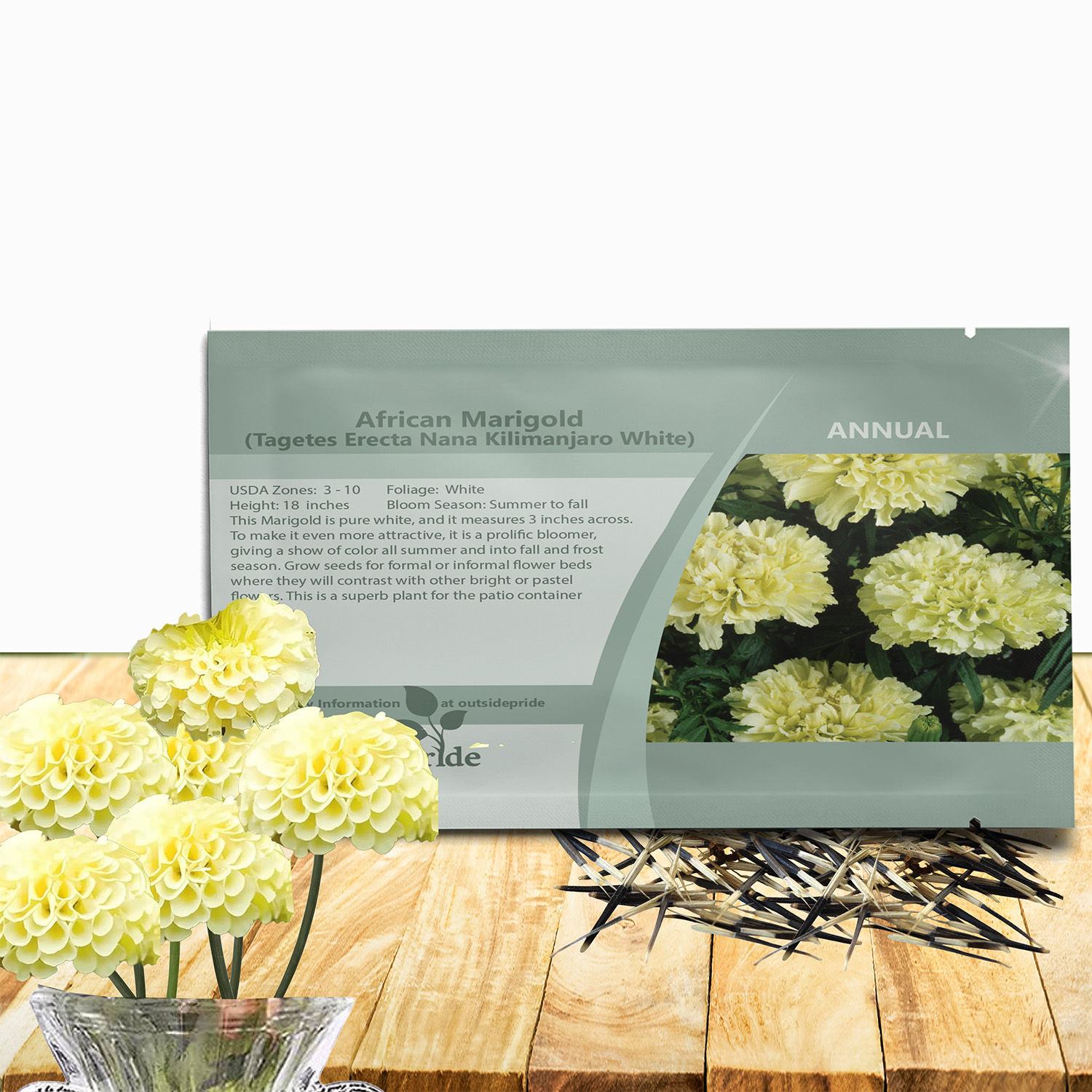

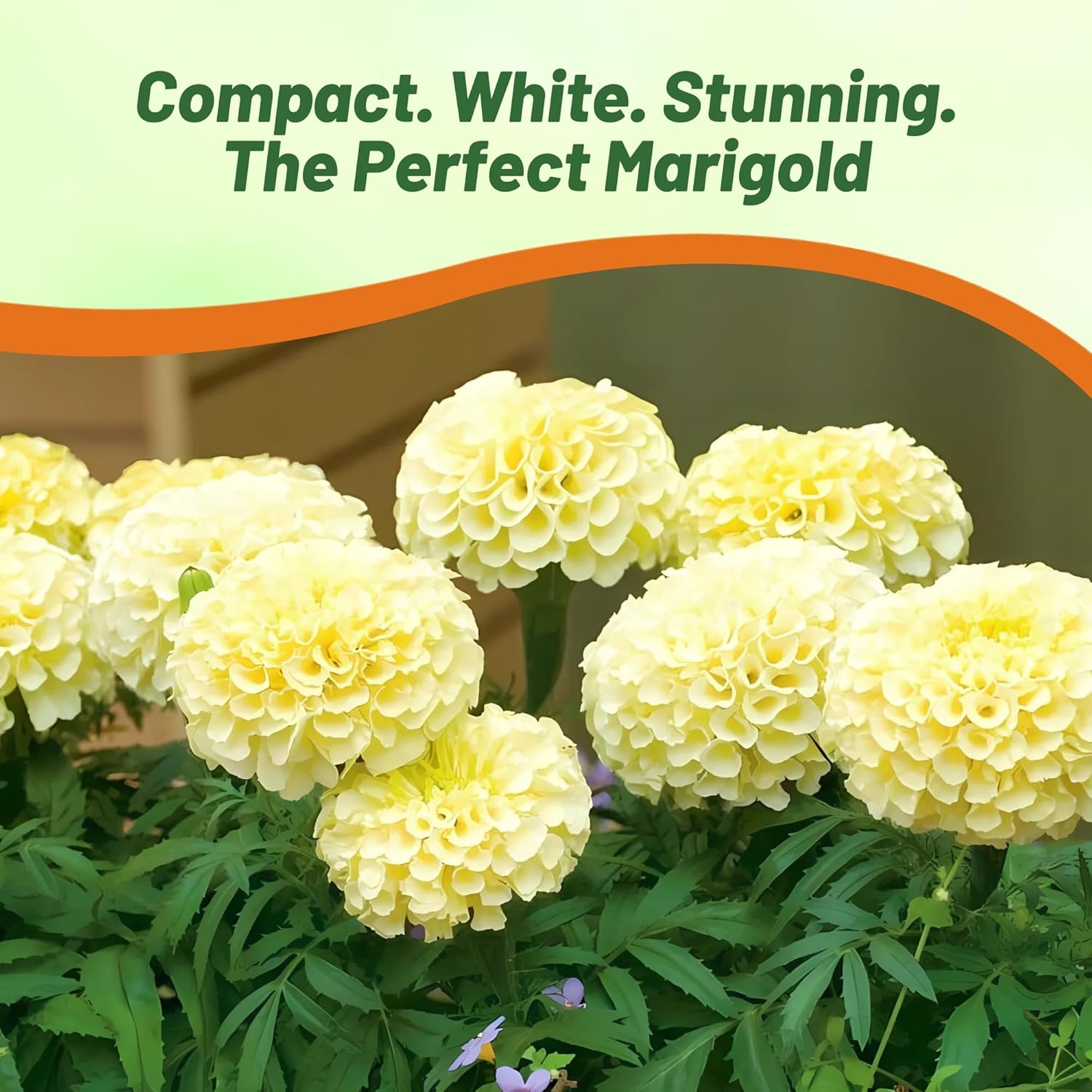

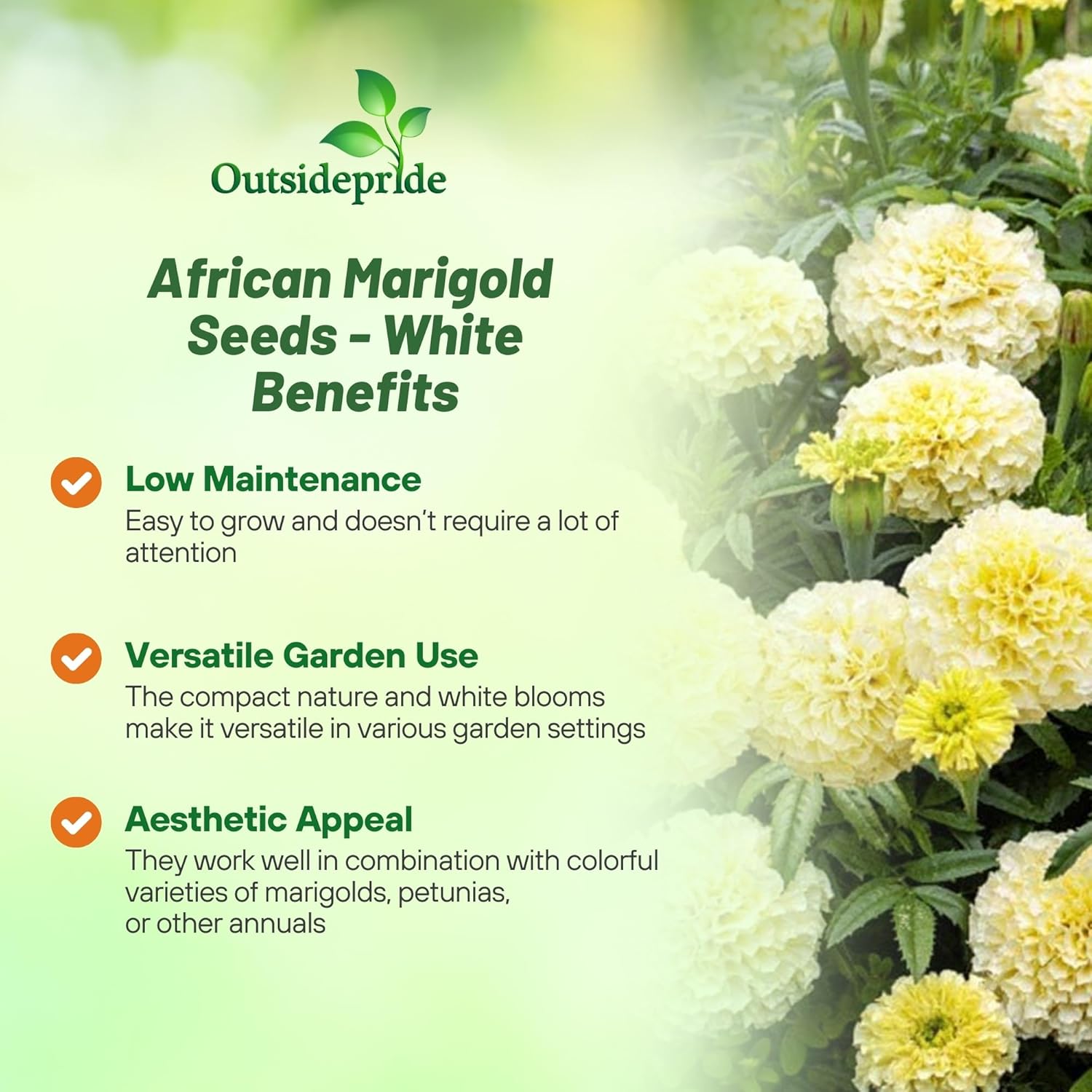
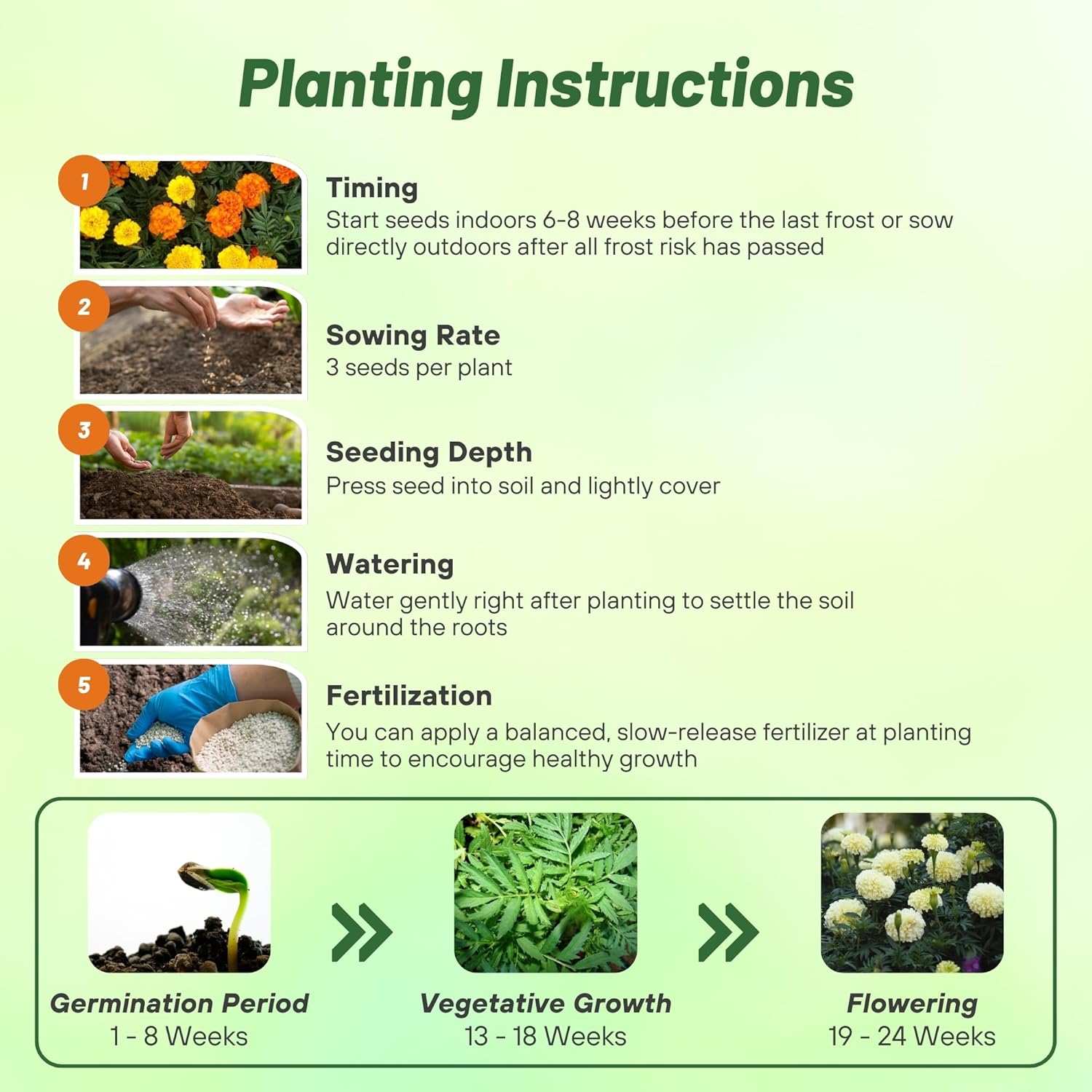
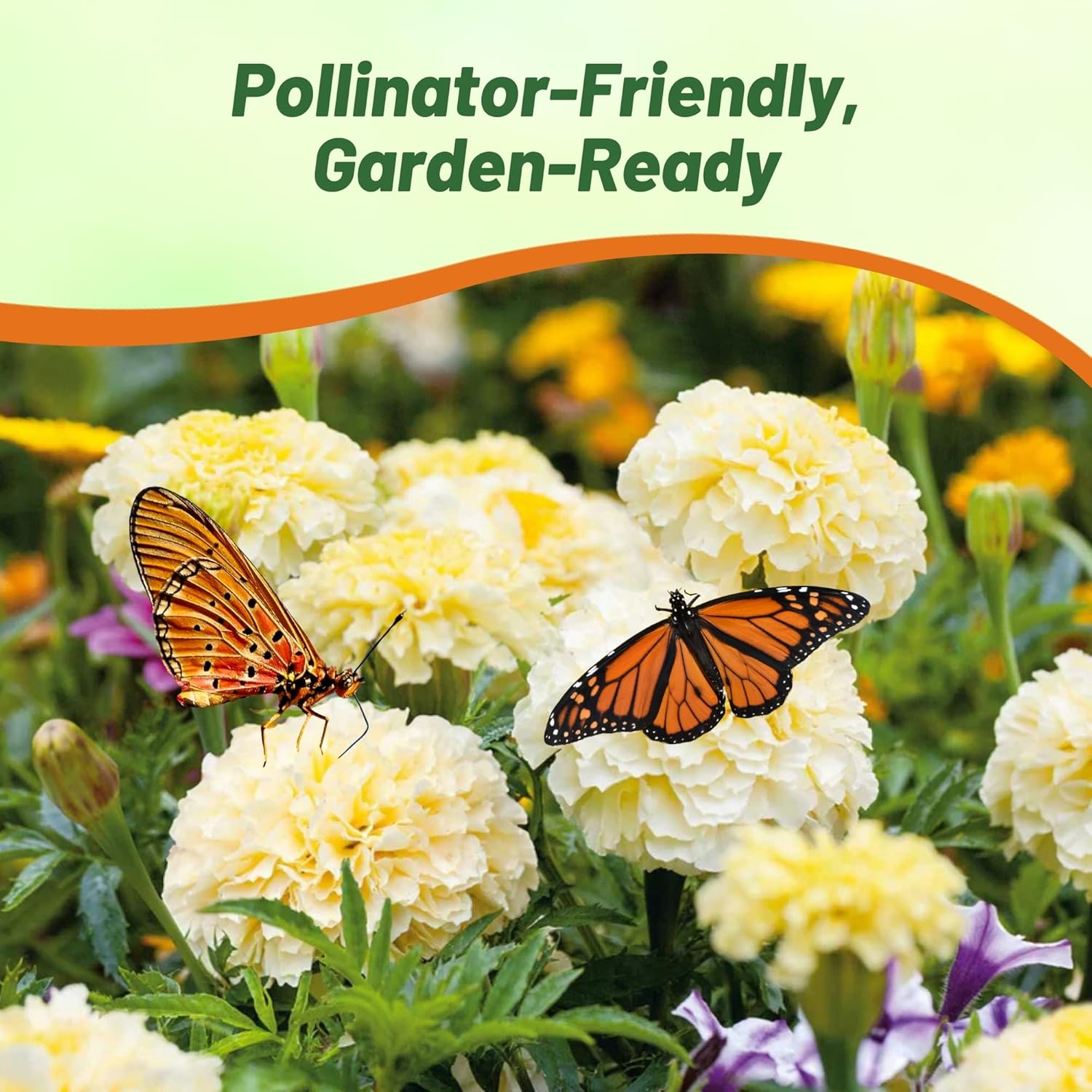
African Marigold Seeds - White
About...
African Marigold (Tagetes Erecta Nana Kilimanjaro White) - Grow this stunning white annual from flower seeds! Marigold Kilimanjaro is a triumph in plant breeding, offering a real creamy white flower. The typical color spectrum is oranges and yellows, and this Marigold flower is pure white, and it measures 3 inches across.MORE MARIGOLD OPTIONS
Planting Directions
TEMPERATURE
70 - 75F
AVERAGE GERM TIME
5 - 20 days
LIGHT REQUIRED
Yes
DEPTH
Press seed into soil and lightly cover
SOWING RATE
3 seeds per plant
MOISTURE
Keep seed moist until germination
PLANT SPACING
9 - 12 inches

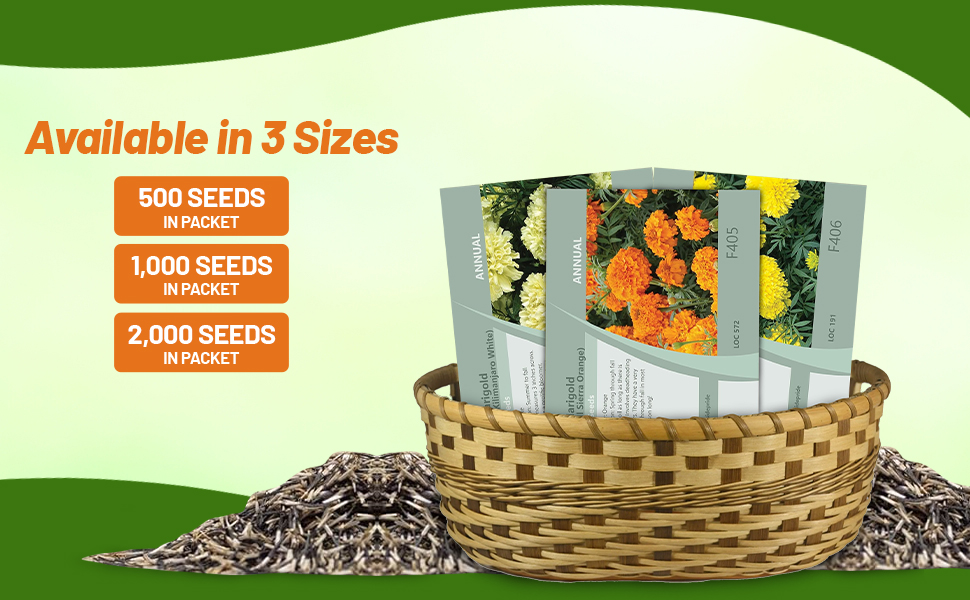
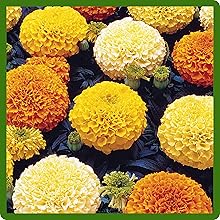

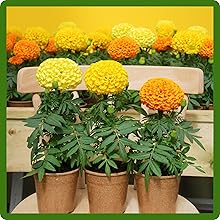
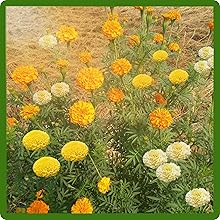
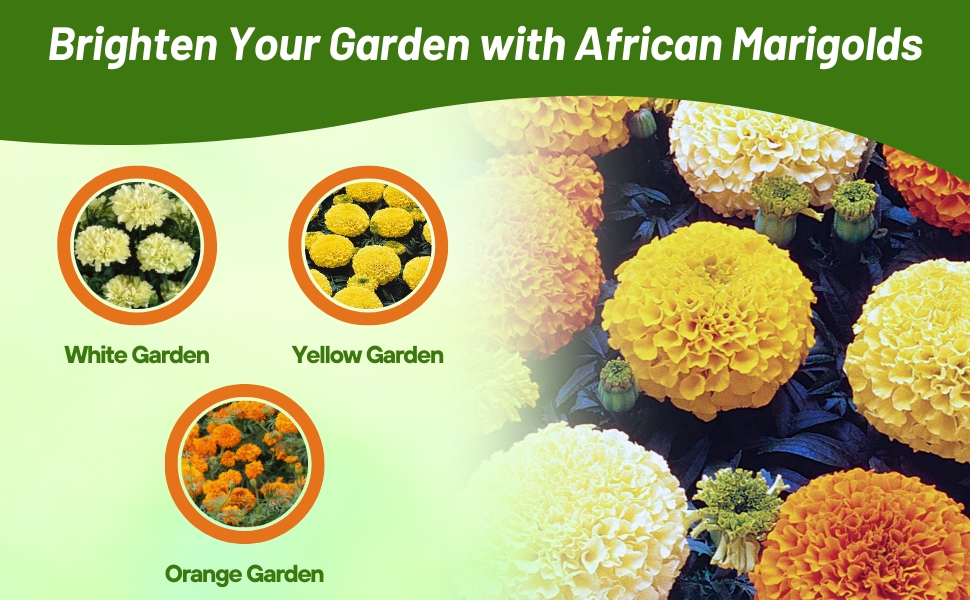
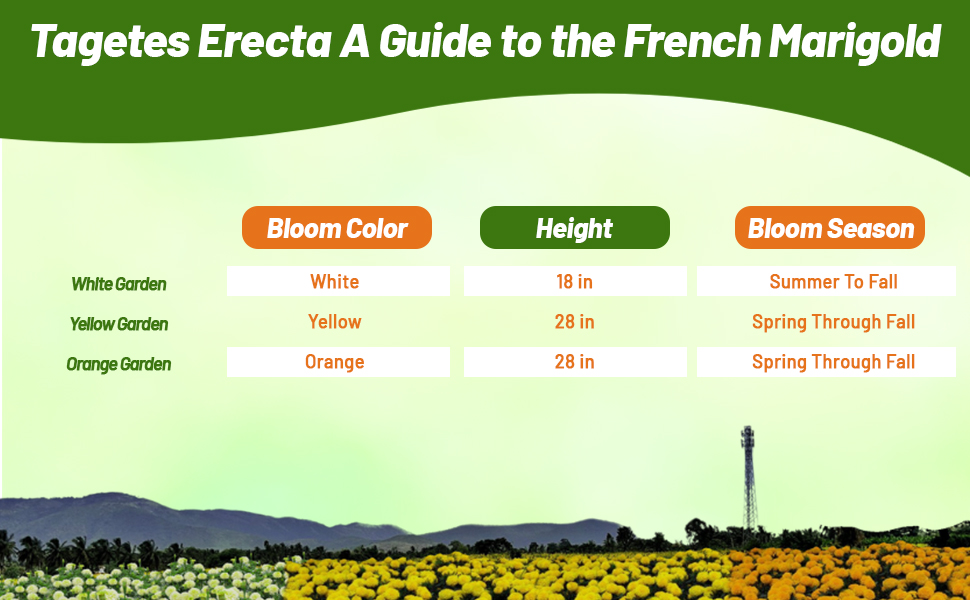

African Marigold (Tagetes Erecta Nana Kilimanjaro White) - Grow this stunning white annual from flower seeds! Marigold Kilimanjaro is a triumph in plant breeding, offering a real creamy white flower. The typical color spectrum is oranges and yellows, and this Marigold flower is pure white, and it measures 3 inches across. To make it even more attractive, it is a prolific bloomer, giving a show of color all summer and into the fall and frost season. Grow these white Marigolds from flower seeds for formal or informal flower beds where they will contrast nicely with other bright or pastel flowers. This is a superb plant for the patio container as well.
Common Questions
How are marigolds used in the landscape?
African marigold is commonly used as a bedding plant or in containers to achieve vibrant, enduring colors. It is highly valued as a cut flower.
Do African marigolds really repel garden pests?
It has long been believed that marigolds are effective in repelling various garden pests, including mosquitoes and deer. However, these claims are mostly considered myths, despite numerous online sources touting the almost magical properties of marigolds.
One exception is that certain marigolds release a chemical through their roots that can help control specific harmful soil nematodes. It is worth noting that French marigolds (T. patula) are more likely to possess this benefit compared to African marigolds. Many gardeners who plant marigolds with the expectation of keeping rabbits, aphids, and other pests away end up disappointed. Nonetheless, marigolds do attract beneficial garden inhabitants such as bees, butterflies, and ladybugs.
If marigolds are native to Mexico, why are some called French marigolds or African marigolds?
Marigold seeds were initially introduced to Europe from Mexico by explorers in the 16th century. The variety preferred by Portuguese and later French plant breeders was dubbed "French Marigolds." On the other hand, T. erecta earned the name African marigold as its seeds reached Europe through trade routes that traversed Northern Africa.
What is a pot marigold?
Calendula officinalis, commonly known as pot marigold, is a distinct flower species that belongs to a different genus than true marigolds. Despite being in the same Asteraceae family, its flowers may look similar to marigolds or chrysanthemums. However, the foliage of pot marigold differs significantly from that of marigolds, lacking the ferny texture. Moreover, pot marigold blooms earlier and for a shorter period than true marigolds, typically flowering in May and June.
Planting Directions
TEMPERATURE
70 - 75F
AVERAGE GERM TIME
5 - 20 days
LIGHT REQUIRED
Yes
DEPTH
Press seed into soil and lightly cover
SOWING RATE
2 - 3 seeds per plant or 5 ounces per 1,000 square feet or 13 pounds per acre
MOISTURE
Keep seed moist until germination
PLANT SPACING
8 inches
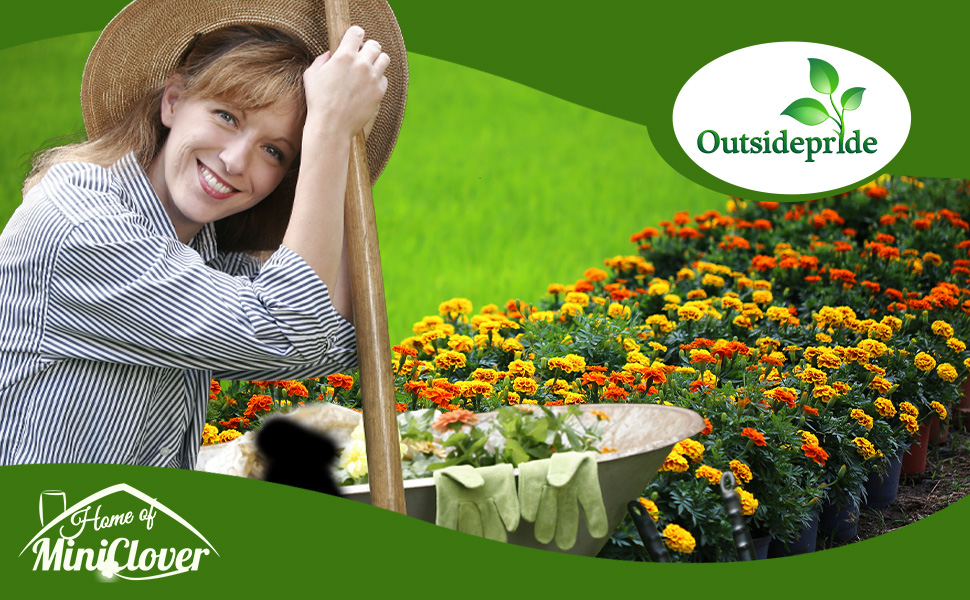

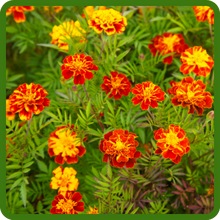


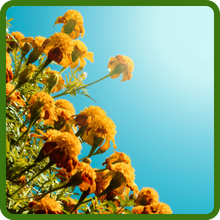
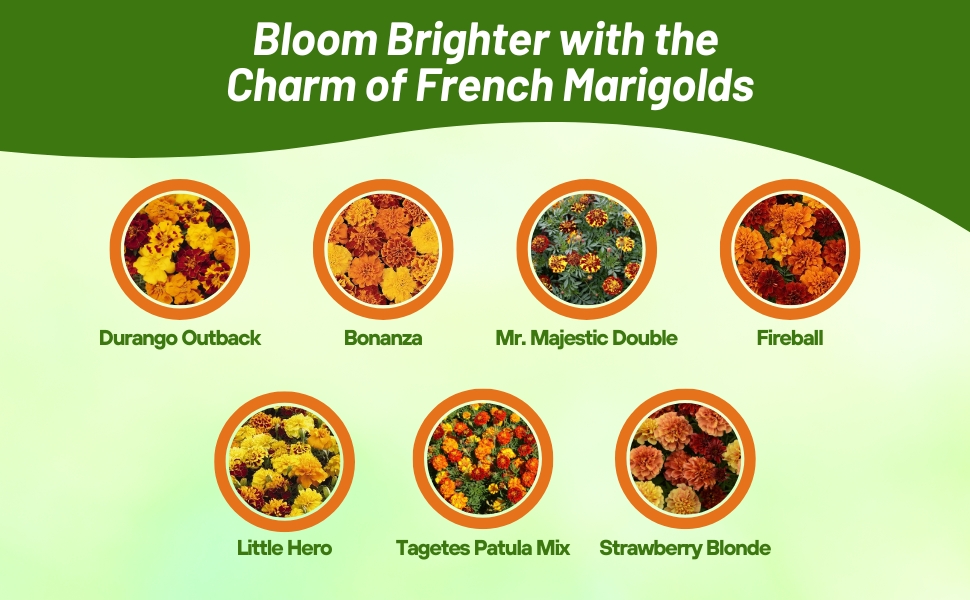
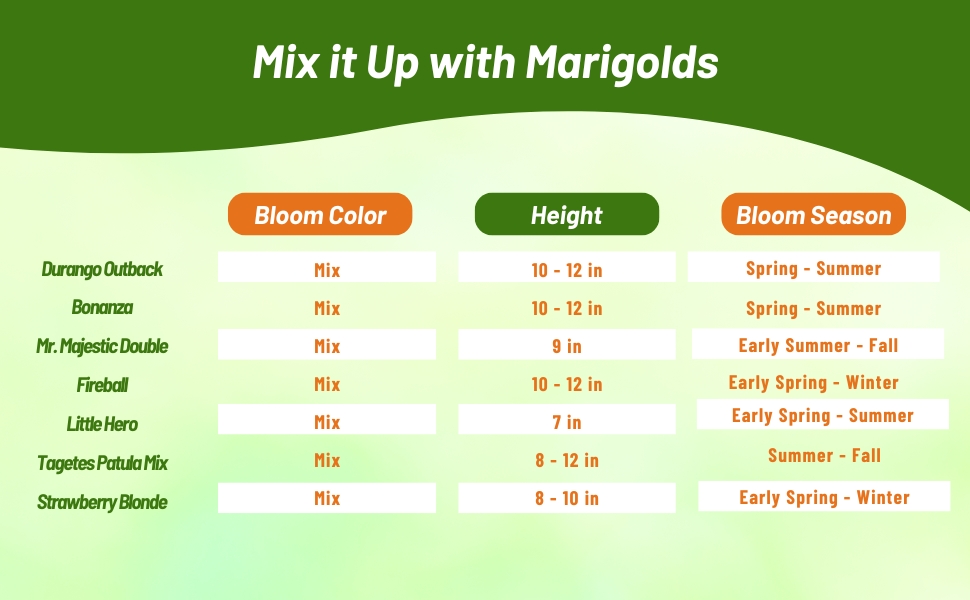
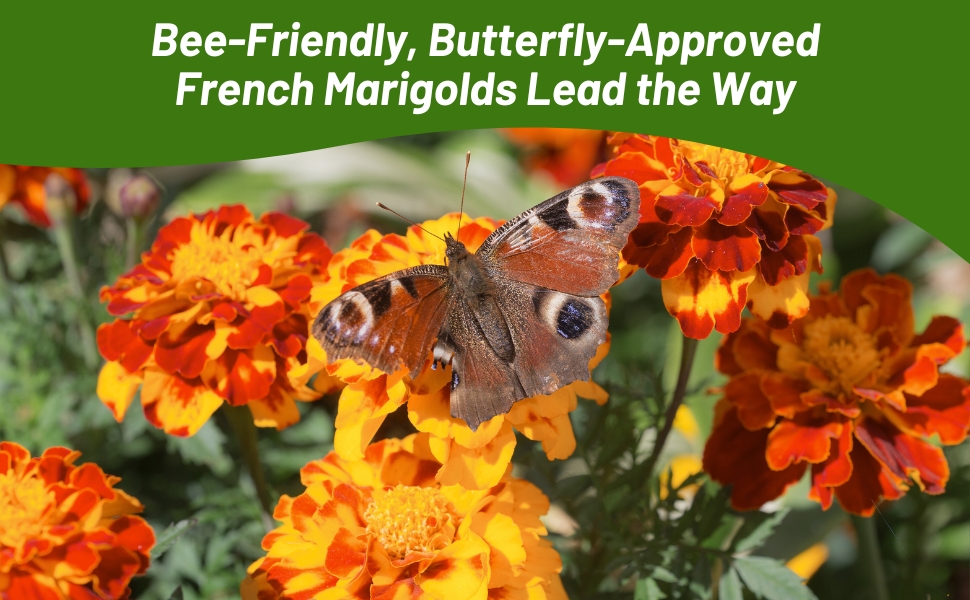
French Marigold (Tagetes Patula Mix) - Enjoy sunny blooms all summer long by starting Marigold seeds in the early spring. This seed mix produces small, compact plants with flowers in shades of orange and yellow. These dwarf plants are perfect for edging the front of the sunny flower garden or for baskets and containers. Butterflies will visit the flowers again and again. Marigold plant care includes removing spent flowers to encourage extended bloom period and to keep plants compact. Also, the plants do best with full sun and regular watering, and they will continue flowering until the first hard freeze.
Common Questions
How are marigolds used in the landscape?
African marigold is commonly used as a bedding plant or in containers to achieve vibrant, enduring colors. It is highly valued as a cut flower.
Do African marigolds really repel garden pests?
It has long been believed that marigolds are effective in repelling various garden pests, including mosquitoes and deer. However, these claims are mostly considered myths, despite numerous online sources touting the almost magical properties of marigolds.
One exception is that certain marigolds release a chemical through their roots that can help control specific harmful soil nematodes. It is worth noting that French marigolds (T. patula) are more likely to possess this benefit compared to African marigolds. Many gardeners who plant marigolds with the expectation of keeping rabbits, aphids, and other pests away end up disappointed. Nonetheless, marigolds do attract beneficial garden inhabitants such as bees, butterflies, and ladybugs.
If marigolds are native to Mexico, why are some called French marigolds or African marigolds?
Marigold seeds were initially introduced to Europe from Mexico by explorers in the 16th century. The variety preferred by Portuguese and later French plant breeders was dubbed "French Marigolds." On the other hand, T. erecta earned the name African marigold as its seeds reached Europe through trade routes that traversed Northern Africa.
What is a pot marigold?
Calendula officinalis, commonly known as pot marigold, is a distinct flower species that belongs to a different genus than true marigolds. Despite being in the same Asteraceae family, its flowers may look similar to marigolds or chrysanthemums. However, the foliage of pot marigold differs significantly from that of marigolds, lacking the ferny texture. Moreover, pot marigold blooms earlier and for a shorter period than true marigolds, typically flowering in May and June.
Planting Directions
TEMPERATURE
70 - 75F
AVERAGE GERM TIME
5 - 20 days
LIGHT REQUIRED
Yes
DEPTH
Press seed into soil and lightly cover
SOWING RATE
3 seeds per plant
MOISTURE
Keep seed moist until germination
PLANT SPACING
6 - 10 inches

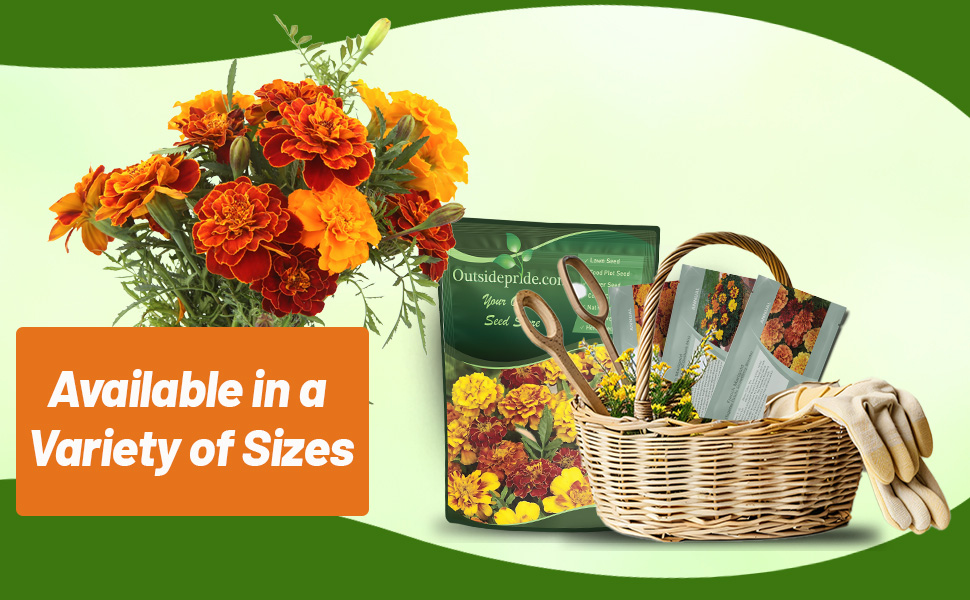
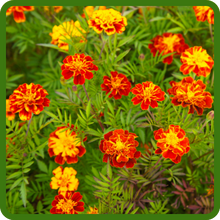

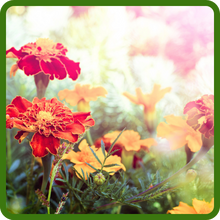
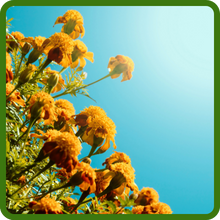

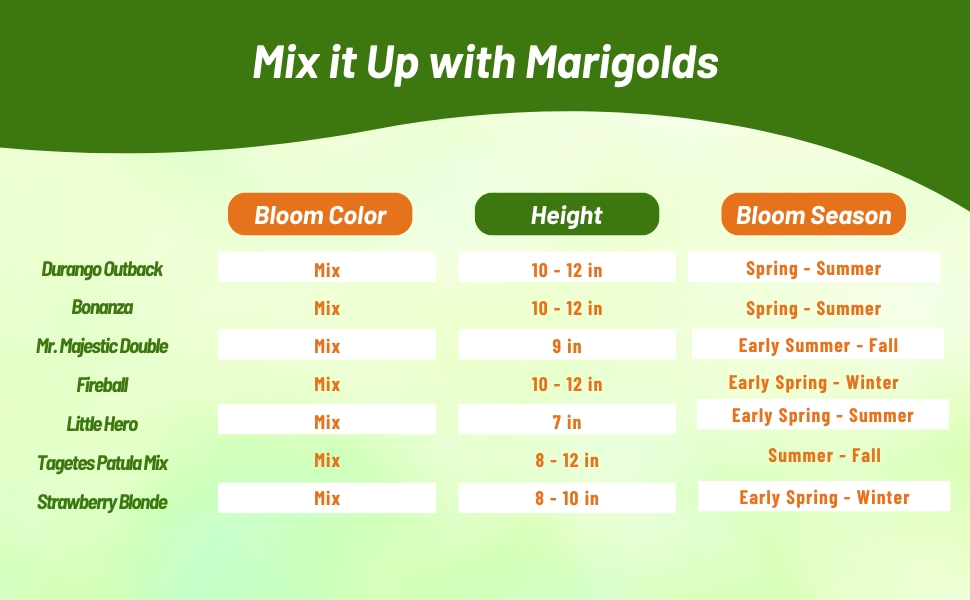
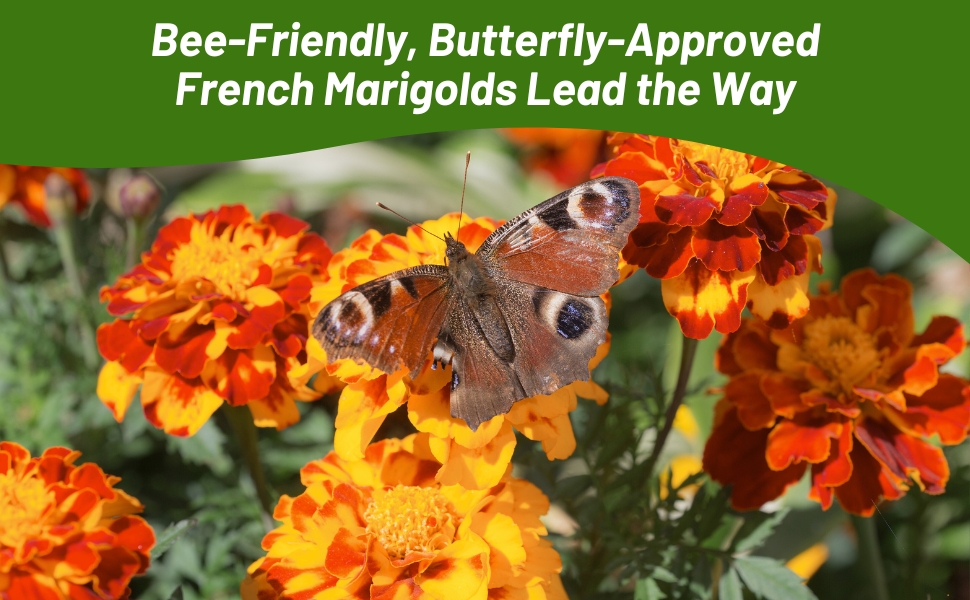
French Marigold (Tagetes Patula Durango Outback Mix) - This Outback Mix has bright red, yellow, and bicolor flowers color on compact, well-branched, early-blooming plants. An early-blooming series, Durango features 2 to 2.5 anemone type flowers supported by strong stems, on well-branched plants. At final garden height, they make a beautiful addition to any flower garden. Marigolds will attract bees and butterflies with its very fragrant flowers and even scented foliage. Heat tolerant flowers which bloom from spring through late summer. These annuals are robust, low maintenace plants that establish easily from flower seeds. This French marigold plant is an excellent garden performer only reaching 10 - 12 inches in height.
Common Questions
How are marigolds used in the landscape?
African marigold is commonly used as a bedding plant or in containers to achieve vibrant, enduring colors. It is highly valued as a cut flower.
Do African marigolds really repel garden pests?
It has long been believed that marigolds are effective in repelling various garden pests, including mosquitoes and deer. However, these claims are mostly considered myths, despite numerous online sources touting the almost magical properties of marigolds.
One exception is that certain marigolds release a chemical through their roots that can help control specific harmful soil nematodes. It is worth noting that French marigolds (T. patula) are more likely to possess this benefit compared to African marigolds. Many gardeners who plant marigolds with the expectation of keeping rabbits, aphids, and other pests away end up disappointed. Nonetheless, marigolds do attract beneficial garden inhabitants such as bees, butterflies, and ladybugs.
If marigolds are native to Mexico, why are some called French marigolds or African marigolds?
Marigold seeds were initially introduced to Europe from Mexico by explorers in the 16th century. The variety preferred by Portuguese and later French plant breeders was dubbed "French Marigolds." On the other hand, T. erecta earned the name African marigold as its seeds reached Europe through trade routes that traversed Northern Africa.
What is a pot marigold?
Calendula officinalis, commonly known as pot marigold, is a distinct flower species that belongs to a different genus than true marigolds. Despite being in the same Asteraceae family, its flowers may look similar to marigolds or chrysanthemums. However, the foliage of pot marigold differs significantly from that of marigolds, lacking the ferny texture. Moreover, pot marigold blooms earlier and for a shorter period than true marigolds, typically flowering in May and June.
Planting Directions
TEMPERATURE
70 - 75F
AVERAGE GERM TIME
5 - 20 days
LIGHT REQUIRED
Yes
DEPTH
Press seed into soil and light cover
SOWING RATE
3 seeds per plant
MOISTURE
Keep seeds moist until germination
PLANT SPACING
24 inches

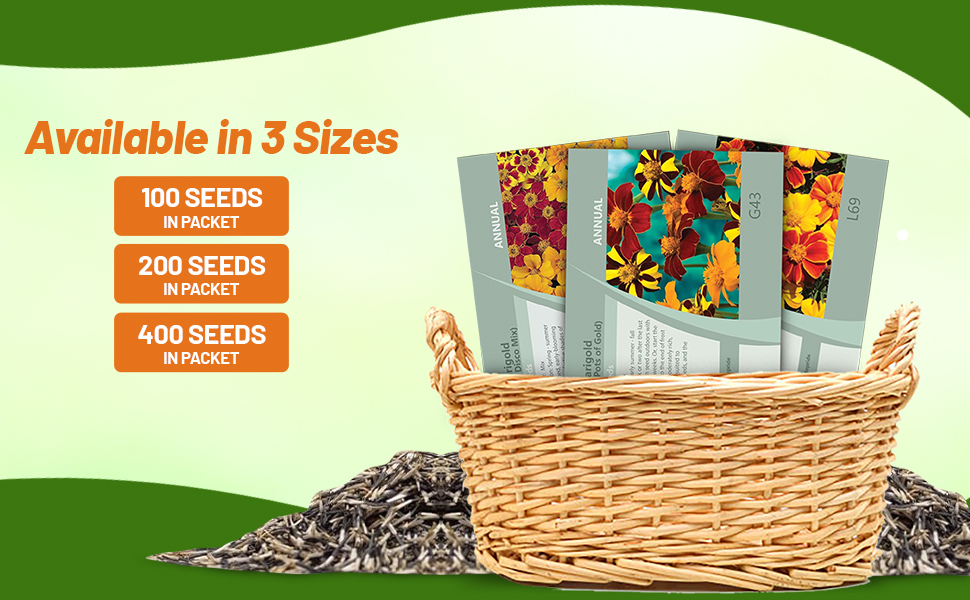
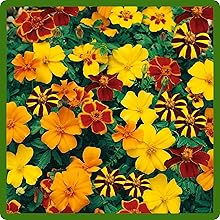
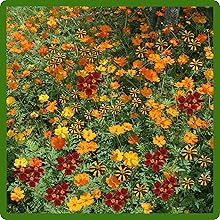

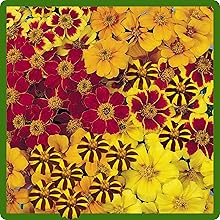
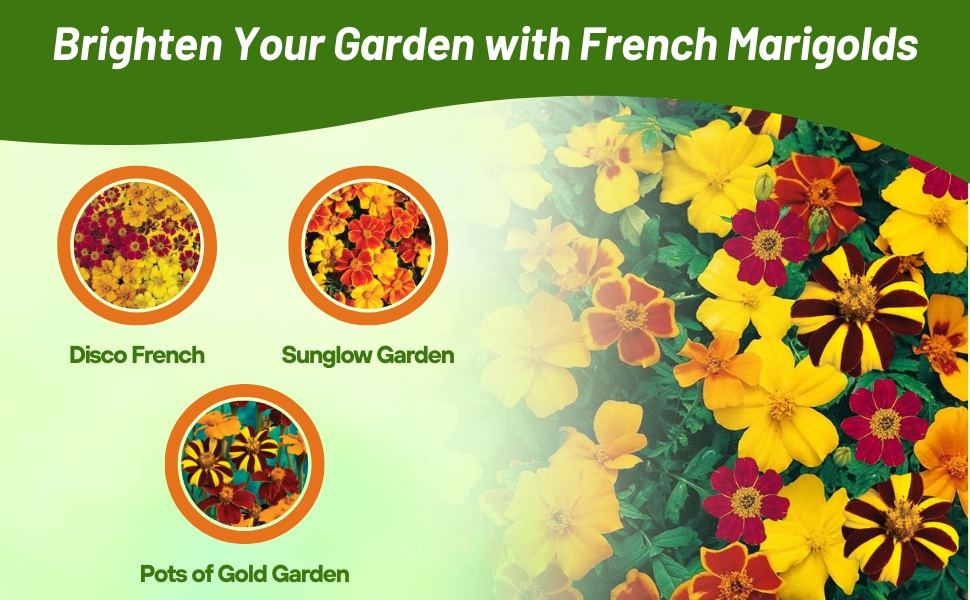
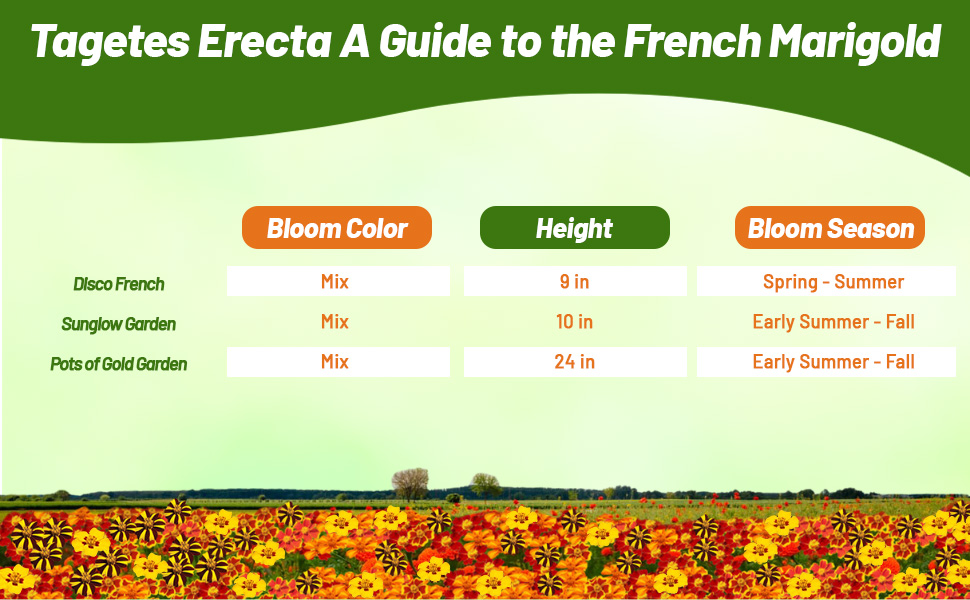
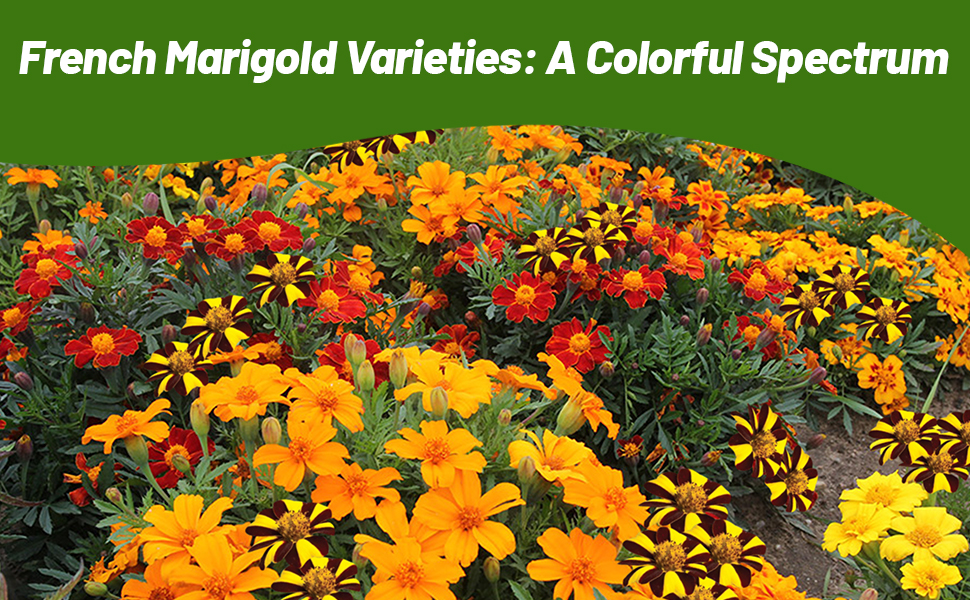
French Marigold (Tagetes patula Pots of Gold) - An exclusive blend of French Marigolds, including three fiery colors - golden, striped and a fabulous vibrant red. Bushy plants produce masses of single flowers atop tall sturdy stems which have a uniform height, making them perfect for borders and containers. Attractive to bees and butterflies. The 2 foot tall plants produce eye-catching blossoms all summer and into Fall.
Many gardeners discovered their love for flowers at an early age by starting with a packet of marigold seeds. These old-fashioned flowers are so easy to grow and add reliable color to gardens of every size and style. Rediscover their care-free, aromatic charm, with the added bonus that their flowers are edible!
Common Questions
How are marigolds used in the landscape?
African marigold is commonly used as a bedding plant or in containers to achieve vibrant, enduring colors. It is highly valued as a cut flower.
Do African marigolds really repel garden pests?
It has long been believed that marigolds are effective in repelling various garden pests, including mosquitoes and deer. However, these claims are mostly considered myths, despite numerous online sources touting the almost magical properties of marigolds.
One exception is that certain marigolds release a chemical through their roots that can help control specific harmful soil nematodes. It is worth noting that French marigolds (T. patula) are more likely to possess this benefit compared to African marigolds. Many gardeners who plant marigolds with the expectation of keeping rabbits, aphids, and other pests away end up disappointed. Nonetheless, marigolds do attract beneficial garden inhabitants such as bees, butterflies, and ladybugs.
If marigolds are native to Mexico, why are some called French marigolds or African marigolds?
Marigold seeds were initially introduced to Europe from Mexico by explorers in the 16th century. The variety preferred by Portuguese and later French plant breeders was dubbed "French Marigolds." On the other hand, T. erecta earned the name African marigold as its seeds reached Europe through trade routes that traversed Northern Africa.
What is a pot marigold?
Calendula officinalis, commonly known as pot marigold, is a distinct flower species that belongs to a different genus than true marigolds. Despite being in the same Asteraceae family, its flowers may look similar to marigolds or chrysanthemums. However, the foliage of pot marigold differs significantly from that of marigolds, lacking the ferny texture. Moreover, pot marigold blooms earlier and for a shorter period than true marigolds, typically flowering in May and June.
Planting Directions
TEMPERATURE
70 - 75F
AVERAGE GERM TIME
5 - 20 days
LIGHT REQUIRED
Yes
DEPTH
Press seed into soil and lightly cover
SOWING RATE
3 seeds per plant
MOISTURE
Keep seeds moist until germination
PLANT SPACING
6 - 10 inches
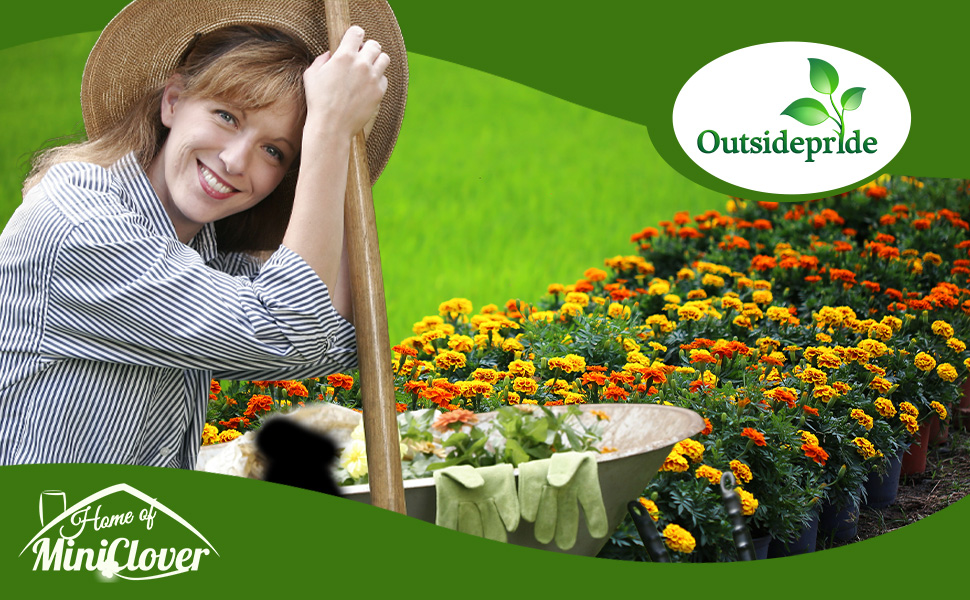

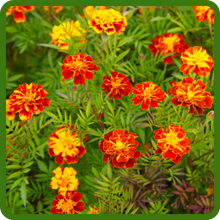





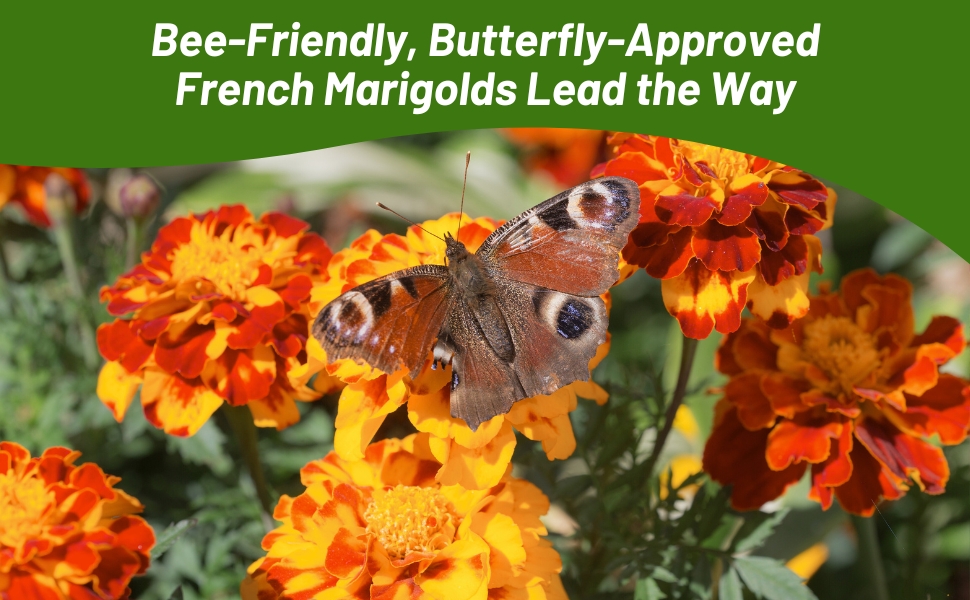
French Marigold (Tagetes patula Mr. Majestic Double) - A charming bicolor French Marigold, with a distinctive appearance. Marigold "Mr Majestic" produces brightly striped blooms in mahogany and gold creating a startling color contrast. These neat, bushy plants are perfect for edging beds and borders or filling patio pots with a bold splash of color. The nectar rich blooms will attract pollinating insects too! Height and spread 9 inches. The 9-inch plants produce eye-catching blossoms all summer and into Fall.
Common Questions
How are marigolds used in the landscape?
African marigold is commonly used as a bedding plant or in containers to achieve vibrant, enduring colors. It is highly valued as a cut flower.
Do African marigolds really repel garden pests?
It has long been believed that marigolds are effective in repelling various garden pests, including mosquitoes and deer. However, these claims are mostly considered myths, despite numerous online sources touting the almost magical properties of marigolds.
One exception is that certain marigolds release a chemical through their roots that can help control specific harmful soil nematodes. It is worth noting that French marigolds (T. patula) are more likely to possess this benefit compared to African marigolds. Many gardeners who plant marigolds with the expectation of keeping rabbits, aphids, and other pests away end up disappointed. Nonetheless, marigolds do attract beneficial garden inhabitants such as bees, butterflies, and ladybugs.
If marigolds are native to Mexico, why are some called French marigolds or African marigolds?
Marigold seeds were initially introduced to Europe from Mexico by explorers in the 16th century. The variety preferred by Portuguese and later French plant breeders was dubbed "French Marigolds." On the other hand, T. erecta earned the name African marigold as its seeds reached Europe through trade routes that traversed Northern Africa.
What is a pot marigold?
Calendula officinalis, commonly known as pot marigold, is a distinct flower species that belongs to a different genus than true marigolds. Despite being in the same Asteraceae family, its flowers may look similar to marigolds or chrysanthemums. However, the foliage of pot marigold differs significantly from that of marigolds, lacking the ferny texture. Moreover, pot marigold blooms earlier and for a shorter period than true marigolds, typically flowering in May and June.
Planting Directions
TEMPERATURE
70 - 75F
AVERAGE GERM TIME
5 - 20 days
LIGHT REQUIRED
Yes
DEPTH
Press seed into soil and lightly cover
SOWING RATE
3 seeds per plant
MOISTURE
Keep seeds moist until germination
PLANT SPACING
6 - 10 inches
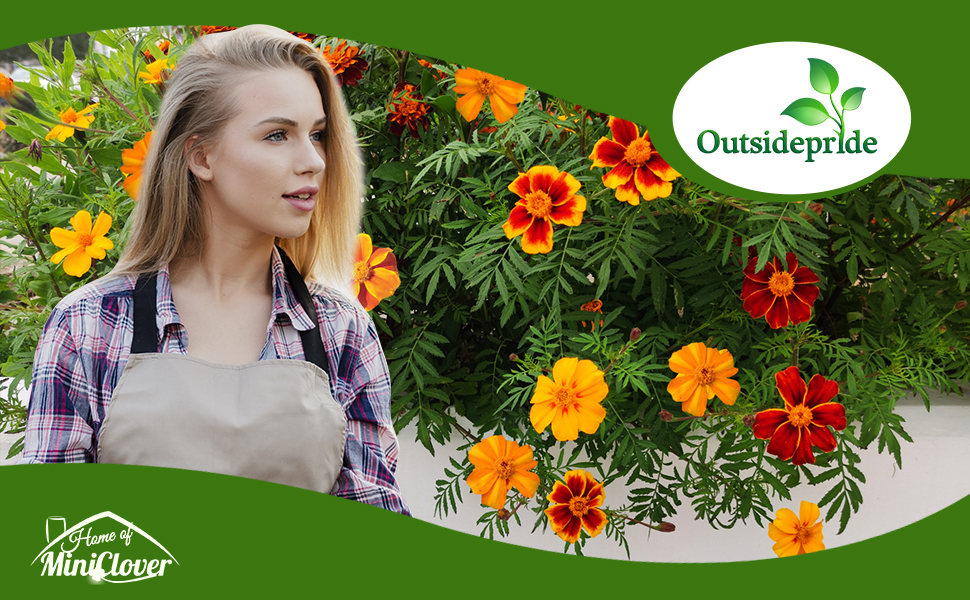
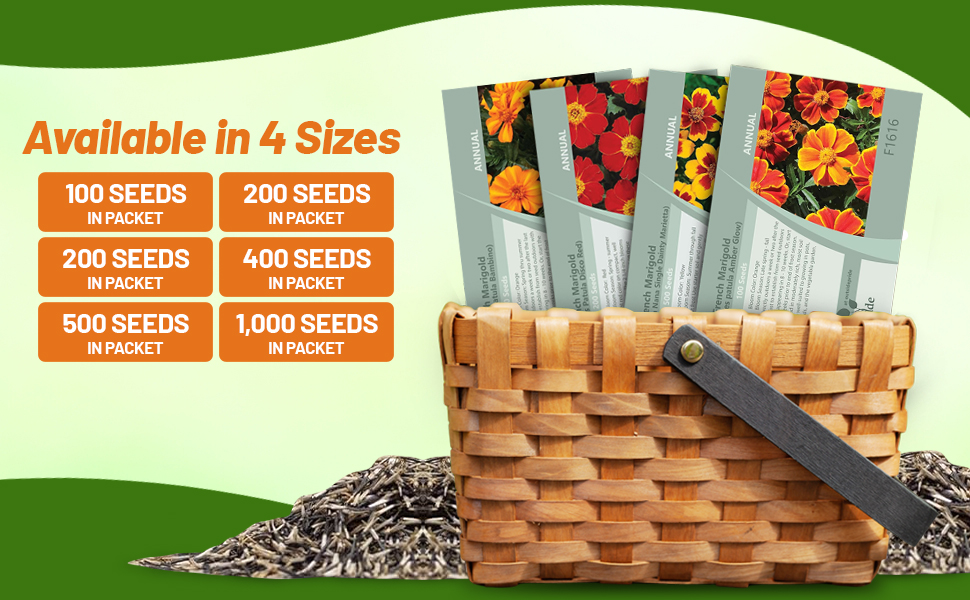
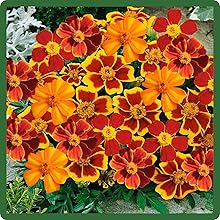
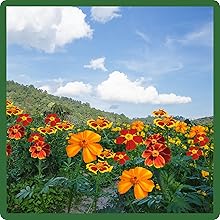
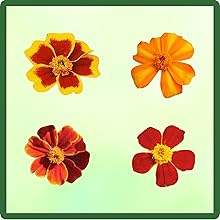
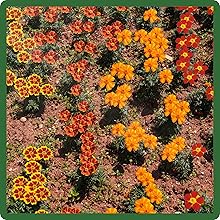
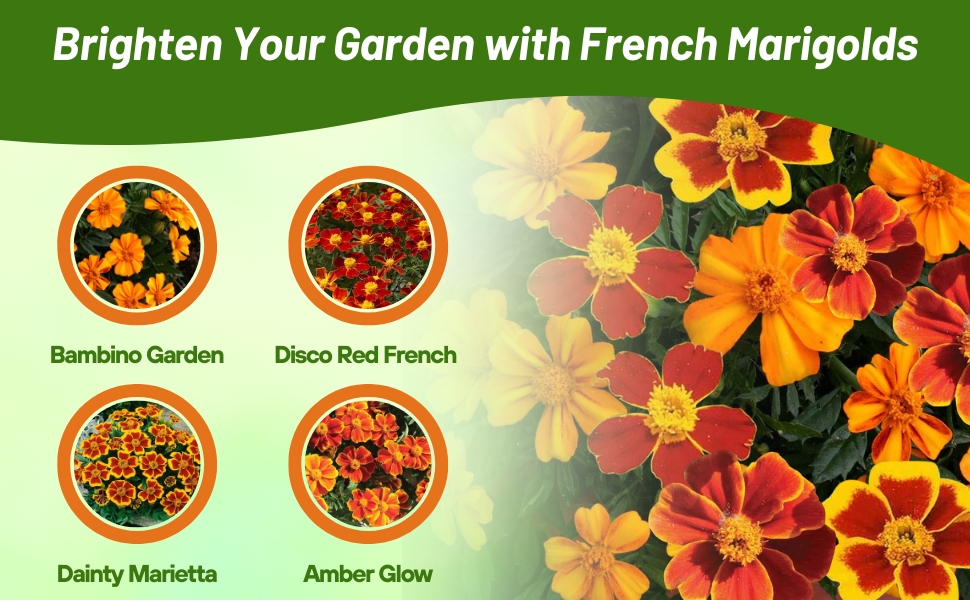
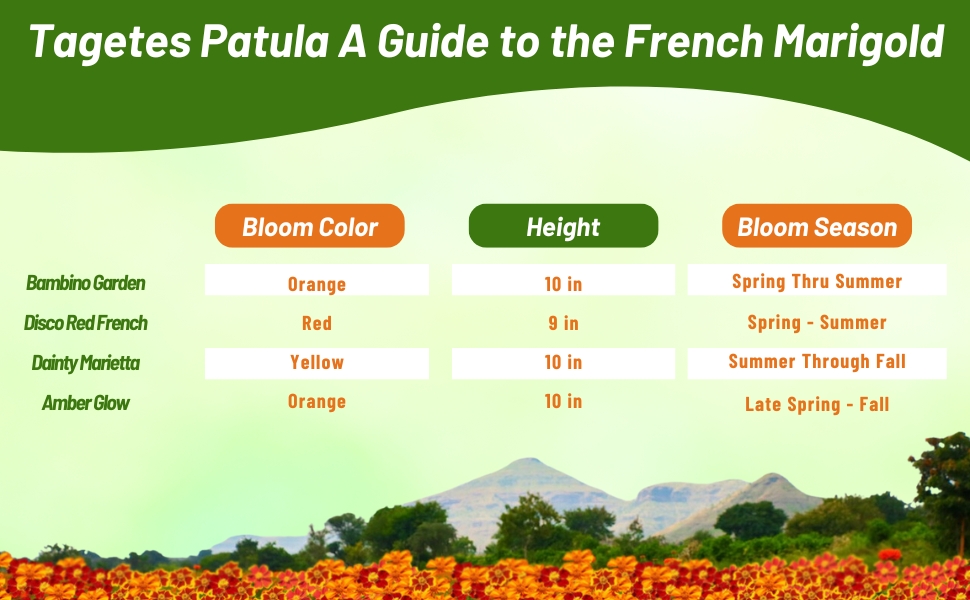
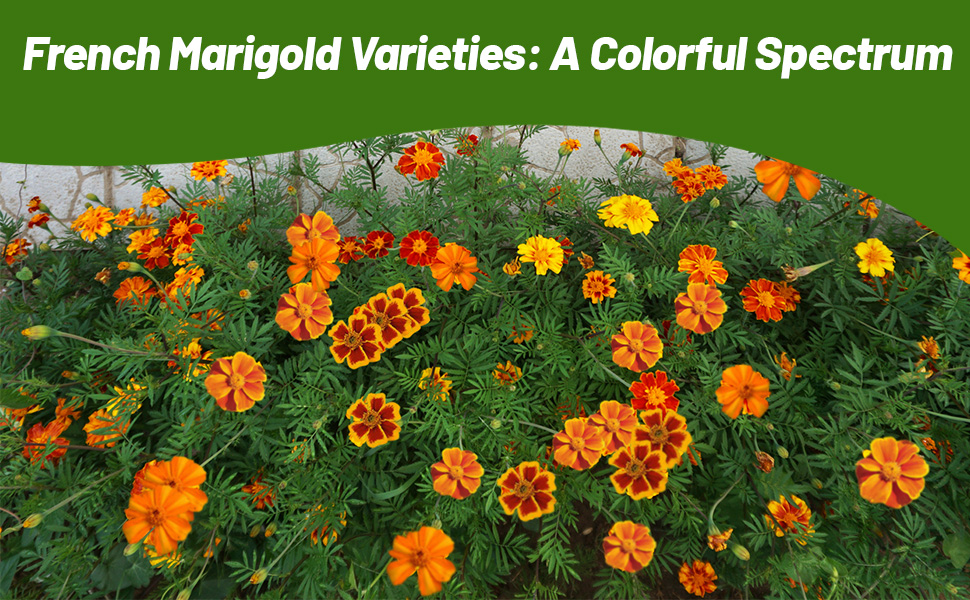
French Marigold (Tagetes patula Bambino) - This darling’s variegated petals of dark and tangerine swirl around an orange center button, giving the effect of a tiny circus tent. Plentiful 2 1/2 inch single-petaled flowers set early on semi-mounded 10 inch bush. Blooms strong until frost, championing orange in the garden. With sunny and cheerful little blooms in tangerine and lighter stripes, Bambino boasts short and perfectly tidy mounds reaching just 10" tall. These compact plants are covered in blooms, making each a small burst of sunshine, ideal for mixed plantings, containers, and bedding.
Common Questions
How are marigolds used in the landscape?
African marigold is commonly used as a bedding plant or in containers to achieve vibrant, enduring colors. It is highly valued as a cut flower.
Do African marigolds really repel garden pests?
It has long been believed that marigolds are effective in repelling various garden pests, including mosquitoes and deer. However, these claims are mostly considered myths, despite numerous online sources touting the almost magical properties of marigolds.
One exception is that certain marigolds release a chemical through their roots that can help control specific harmful soil nematodes. It is worth noting that French marigolds (T. patula) are more likely to possess this benefit compared to African marigolds. Many gardeners who plant marigolds with the expectation of keeping rabbits, aphids, and other pests away end up disappointed. Nonetheless, marigolds do attract beneficial garden inhabitants such as bees, butterflies, and ladybugs.
If marigolds are native to Mexico, why are some called French marigolds or African marigolds?
Marigold seeds were initially introduced to Europe from Mexico by explorers in the 16th century. The variety preferred by Portuguese and later French plant breeders was dubbed "French Marigolds." On the other hand, T. erecta earned the name African marigold as its seeds reached Europe through trade routes that traversed Northern Africa.
What is a pot marigold?
Calendula officinalis, commonly known as pot marigold, is a distinct flower species that belongs to a different genus than true marigolds. Despite being in the same Asteraceae family, its flowers may look similar to marigolds or chrysanthemums. However, the foliage of pot marigold differs significantly from that of marigolds, lacking the ferny texture. Moreover, pot marigold blooms earlier and for a shorter period than true marigolds, typically flowering in May and June.
Planting Directions
TEMPERATURE
70 - 75F
AVERAGE GERM TIME
5 - 20 days
LIGHT REQUIRED
Yes
DEPTH
Press seed into soil and lightly cover
SOWING RATE
3 seeds per plant
MOISTURE
Keep seed moist until germination
PLANT SPACING
8 inches
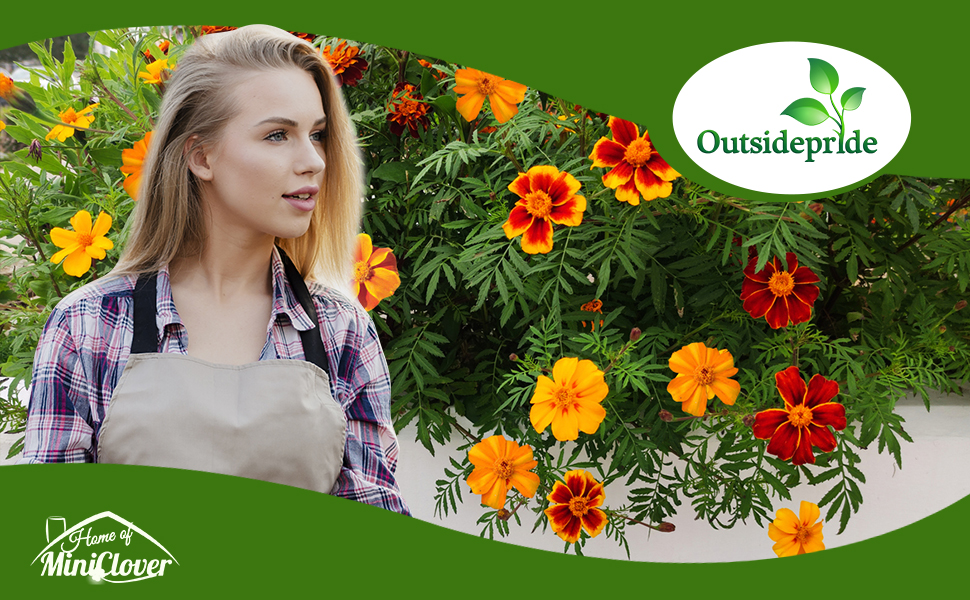
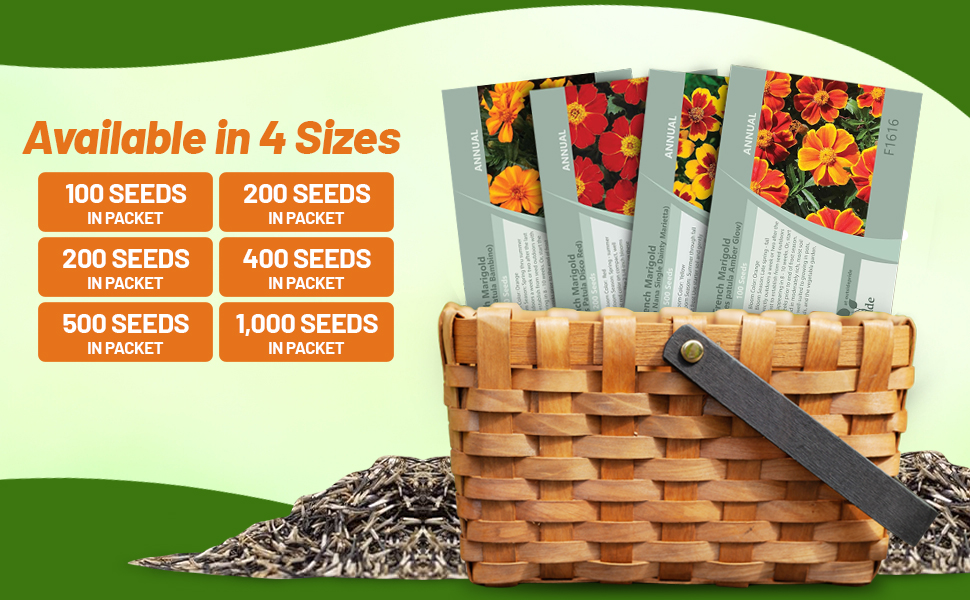
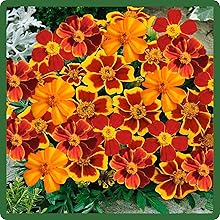
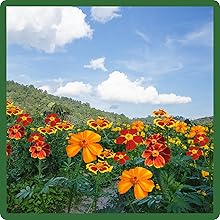
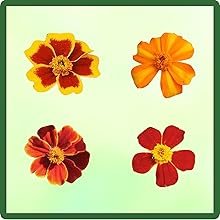
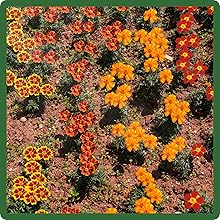
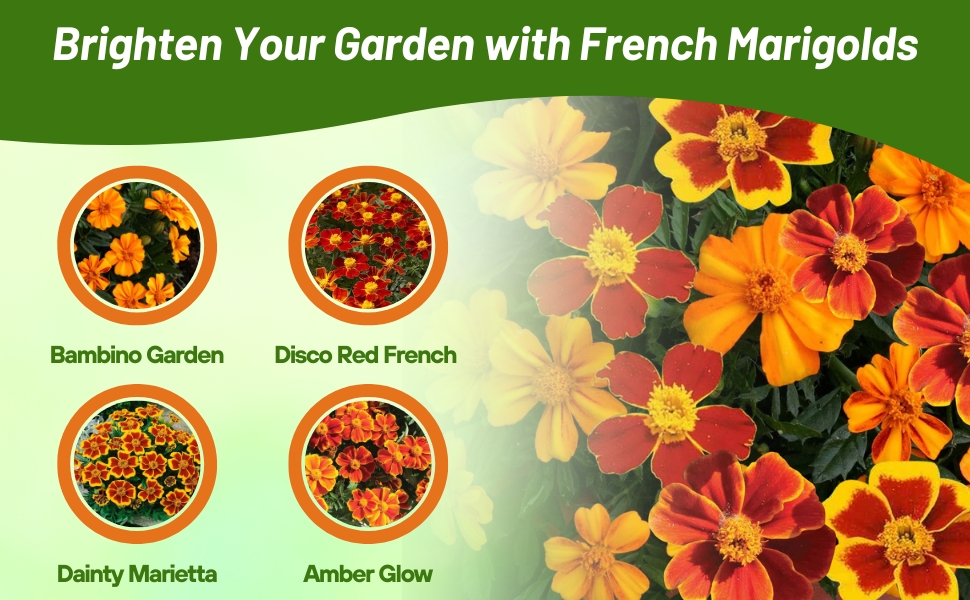
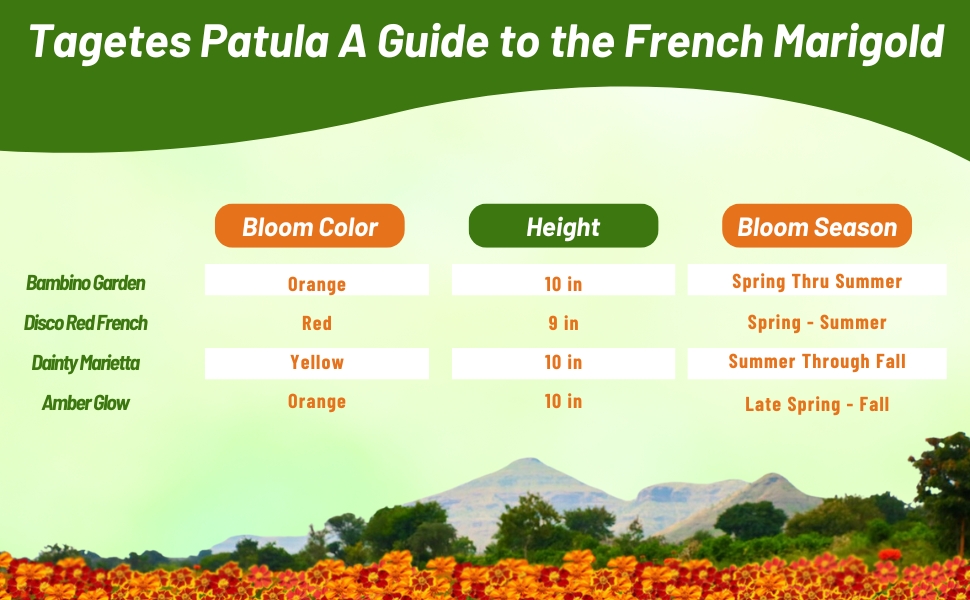
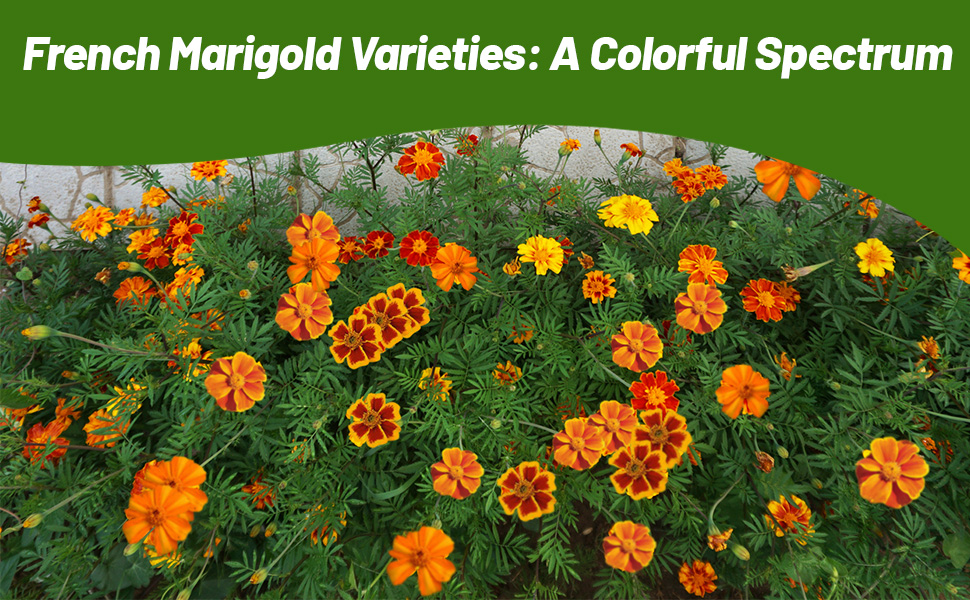
French Marigold (Tagetes patula Amber Glow) - Compact and floriferous plants with bright amber flowers each with a yellow border. Ideal for pots, containers and borders. Good value, effective bedding plant, good performance all summer only reaching 10 inches in height. Marigolds are robust, trouble-free plants that establish easily from flower seeds.
Common Questions
How are marigolds used in the landscape?
African marigold is commonly used as a bedding plant or in containers to achieve vibrant, enduring colors. It is highly valued as a cut flower.
Do African marigolds really repel garden pests?
It has long been believed that marigolds are effective in repelling various garden pests, including mosquitoes and deer. However, these claims are mostly considered myths, despite numerous online sources touting the almost magical properties of marigolds.
One exception is that certain marigolds release a chemical through their roots that can help control specific harmful soil nematodes. It is worth noting that French marigolds (T. patula) are more likely to possess this benefit compared to African marigolds. Many gardeners who plant marigolds with the expectation of keeping rabbits, aphids, and other pests away end up disappointed. Nonetheless, marigolds do attract beneficial garden inhabitants such as bees, butterflies, and ladybugs.
If marigolds are native to Mexico, why are some called French marigolds or African marigolds?
Marigold seeds were initially introduced to Europe from Mexico by explorers in the 16th century. The variety preferred by Portuguese and later French plant breeders was dubbed "French Marigolds." On the other hand, T. erecta earned the name African marigold as its seeds reached Europe through trade routes that traversed Northern Africa.
What is a pot marigold?
Calendula officinalis, commonly known as pot marigold, is a distinct flower species that belongs to a different genus than true marigolds. Despite being in the same Asteraceae family, its flowers may look similar to marigolds or chrysanthemums. However, the foliage of pot marigold differs significantly from that of marigolds, lacking the ferny texture. Moreover, pot marigold blooms earlier and for a shorter period than true marigolds, typically flowering in May and June.
Planting Directions
TEMPERATURE
70 - 75F
AVERAGE GERM TIME
5 - 20 days
LIGHT REQUIRED
Yes
DEPTH
Press seed into soil and lightly cover
SOWING RATE
3 seeds per plant
MOISTURE
Keep seeds moist unitl germination
PLANT SPACING
18 inches
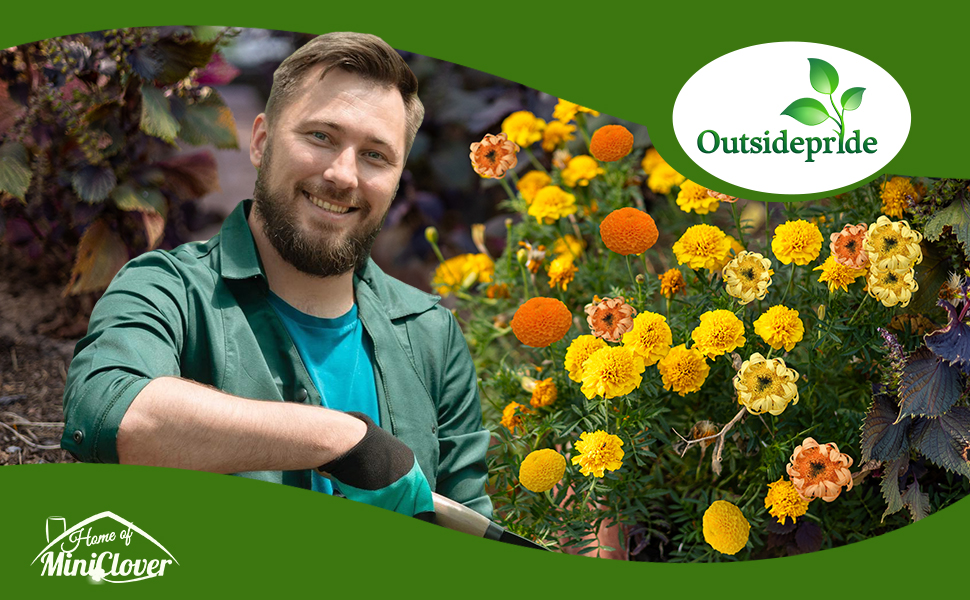
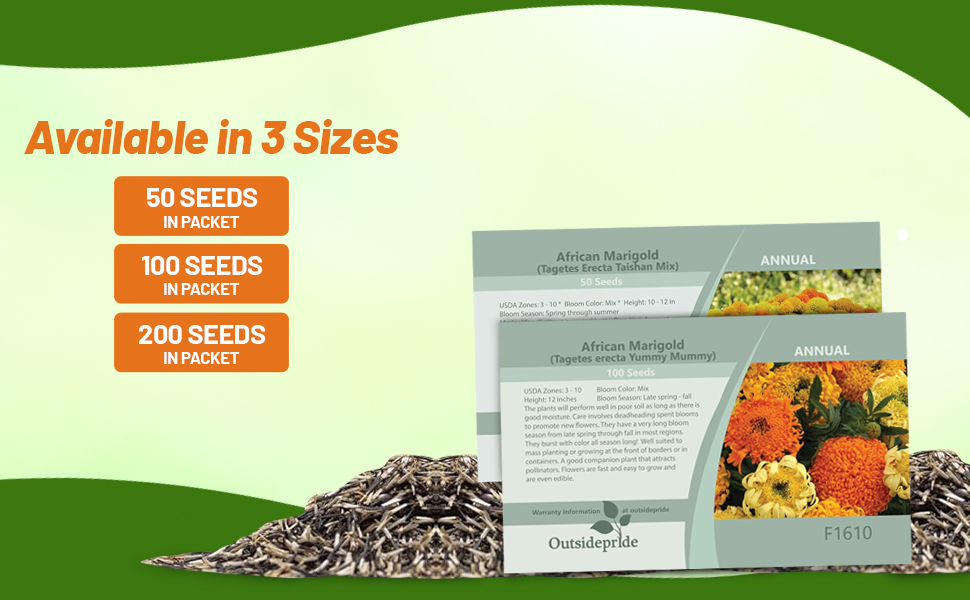
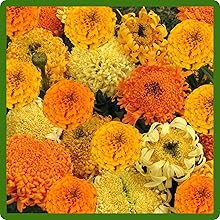
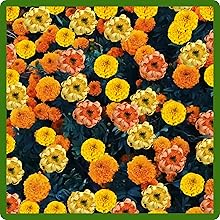

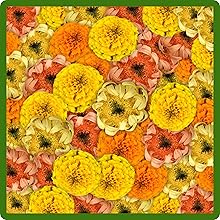
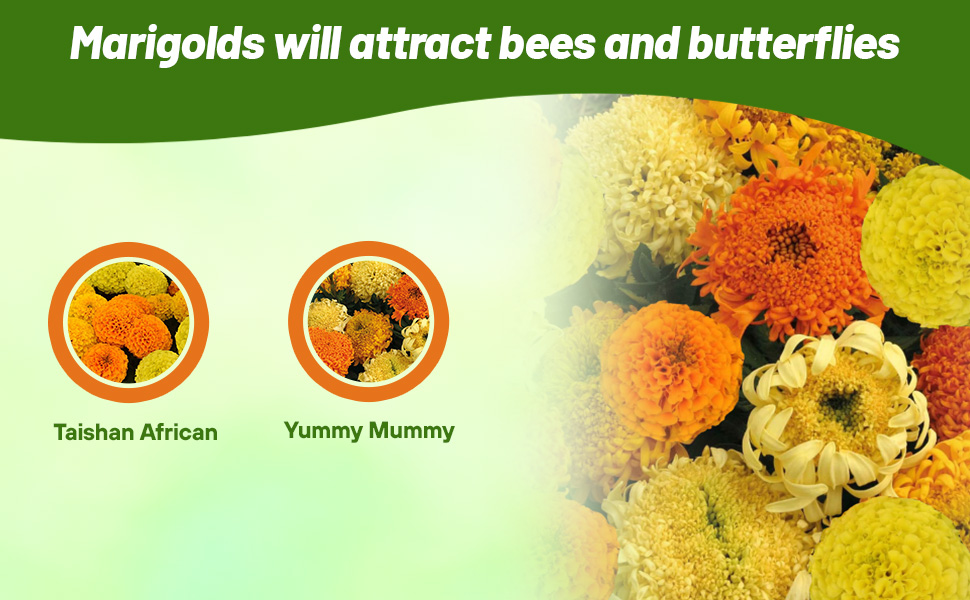
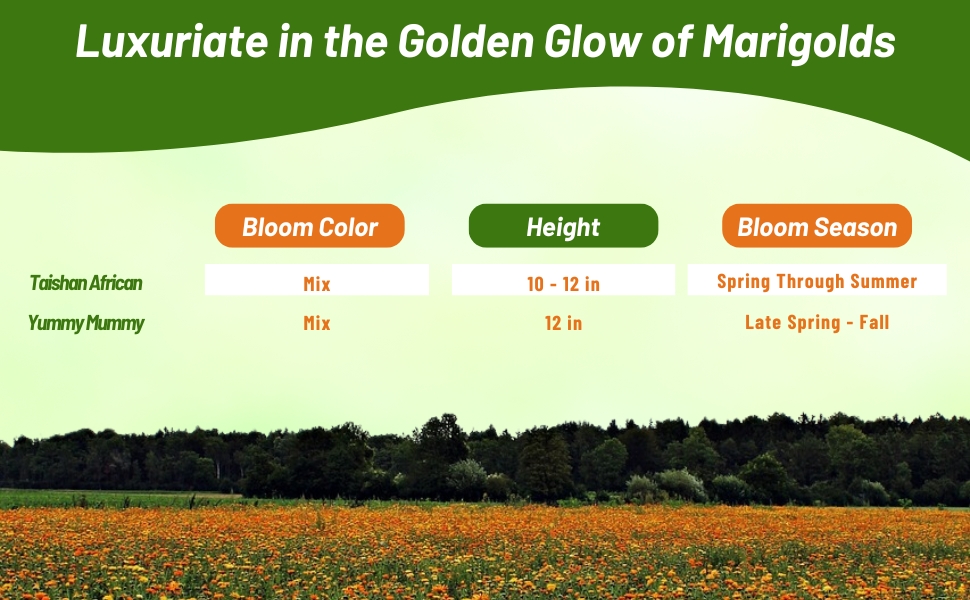

African Marigold (Tagetes erecta Yummy Mummy) - A bright mix of yellow, orange and gold Chrysanthemum type flowers. Compact annual reaching 12 inches in height with dark green, deeply divided leaves and ornate flowers with curved tubular petals surrounding a ruffled center. Flowers bloom from summer to autumn in a bright mix of yellow, orange and gold and measure up to 4 inches across. Well suited to mass planting or growing at the front of borders or in containers. A good companion plant that attracts pollinators. Flowers are fast and easy to grow and are even edible.
The plants will perform well in poor soil as long as there is good moisture. African Marigold care involves deadheading spent blooms to promote new flowers. They have a very long bloom season from late spring through fall in most regions. They burst with color all season long!
Common Questions
How are marigolds used in the landscape?
African marigold is commonly used as a bedding plant or in containers to achieve vibrant, enduring colors. It is highly valued as a cut flower.
Do African marigolds really repel garden pests?
It has long been believed that marigolds are effective in repelling various garden pests, including mosquitoes and deer. However, these claims are mostly considered myths, despite numerous online sources touting the almost magical properties of marigolds.
One exception is that certain marigolds release a chemical through their roots that can help control specific harmful soil nematodes. It is worth noting that French marigolds (T. patula) are more likely to possess this benefit compared to African marigolds. Many gardeners who plant marigolds with the expectation of keeping rabbits, aphids, and other pests away end up disappointed. Nonetheless, marigolds do attract beneficial garden inhabitants such as bees, butterflies, and ladybugs.
If marigolds are native to Mexico, why are some called French marigolds or African marigolds?
Marigold seeds were initially introduced to Europe from Mexico by explorers in the 16th century. The variety preferred by Portuguese and later French plant breeders was dubbed "French Marigolds." On the other hand, T. erecta earned the name African marigold as its seeds reached Europe through trade routes that traversed Northern Africa.
What is a pot marigold?
Calendula officinalis, commonly known as pot marigold, is a distinct flower species that belongs to a different genus than true marigolds. Despite being in the same Asteraceae family, its flowers may look similar to marigolds or chrysanthemums. However, the foliage of pot marigold differs significantly from that of marigolds, lacking the ferny texture. Moreover, pot marigold blooms earlier and for a shorter period than true marigolds, typically flowering in May and June.
































